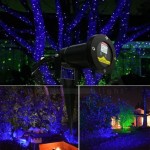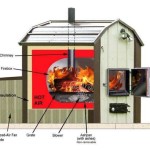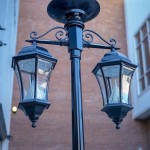Regulations For Outdoor Lighting Standards
Outdoor lighting plays a crucial role in enhancing safety, security, and aesthetics in urban and rural environments. However, poorly designed or excessive lighting can have negative consequences, such as light pollution, glare, and energy waste. To address these concerns and promote responsible lighting practices, numerous regulations and standards have been implemented worldwide. These regulations aim to ensure that outdoor lighting is efficient, effective, and environmentally friendly, while minimizing its adverse impact on public health, wildlife, and the night sky.
Light Pollution and Night Sky Protection
One of the primary concerns of outdoor lighting regulations is light pollution. Excessive and poorly directed lighting can scatter light upward, illuminating the night sky and obscuring the natural darkness. This can disrupt astronomical observations, interfere with the natural rhythms of nocturnal wildlife, and contribute to energy waste. Regulations typically address light pollution by establishing limits on the amount of light that can be directed upward, as well as restricting the use of high-intensity lighting in areas where it is not necessary. For example, regulations may require the use of shielded luminaires, which direct light downward and prevent it from escaping into the surrounding environment. Additionally, some jurisdictions have implemented dark sky ordinances that restrict outdoor lighting in designated areas to preserve the natural darkness of the night sky.
Energy Efficiency and Conservation
Outdoor lighting regulations often focus on promoting energy efficiency and conservation. This is achieved by encouraging the use of energy-efficient lighting technologies, such as LED lights, which consume less energy and last longer than traditional incandescent bulbs. Regulations may also establish minimum energy efficiency standards for outdoor lighting fixtures, requiring manufacturers to meet specific performance criteria. Furthermore, regulations can promote the use of smart lighting systems that allow for dimming or scheduling of lighting based on occupancy and time of day, further reducing energy consumption. By promoting energy efficiency, outdoor lighting regulations contribute to the reduction of greenhouse gas emissions and overall energy costs.
Safety and Security Considerations
Outdoor lighting is essential for public safety and security, but it must be designed and implemented in a way that minimizes risks and hazards. Regulations address safety concerns by establishing standards for lighting levels, color temperatures, and glare control. For example, regulations may specify minimum illumination levels for pedestrian walkways, parking lots, and other public spaces to ensure adequate visibility. Color temperatures, which are measured in Kelvin (K), play a crucial role in influencing the perception of color and visibility. Regulations may specify appropriate color temperatures for different applications, such as warm white (2700K-3000K) for residential areas and cool white (4000K-5000K) for industrial settings. Furthermore, regulations often address glare control, which refers to the excessive brightness that can cause discomfort or impair vision. This is achieved by requiring the use of shielded luminaires and appropriate lighting techniques that minimize the amount of direct light reaching the eyes.
Environmental Considerations
Outdoor lighting can have various environmental impacts, including habitat disruption, light pollution, and energy consumption. Regulations often address these concerns by promoting environmentally friendly lighting practices. For example, regulations may require the use of eco-friendly materials in the manufacture of lighting fixtures, such as recycled materials or materials that are easily recyclable. Additionally, regulations may encourage the use of energy-efficient lighting technologies that minimize the environmental impact of outdoor lighting. For example, regulations may specify minimum energy efficiency standards for outdoor lighting fixtures, requiring manufacturers to meet specific performance criteria. Furthermore, regulations can promote the use of smart lighting systems that allow for dimming or scheduling of lighting based on occupancy and time of day, further reducing energy consumption and environmental impact.
Conclusion
Regulations for outdoor lighting standards play a vital role in ensuring that outdoor lighting is used responsibly and effectively. By addressing concerns such as light pollution, energy efficiency, safety, and environmental impact, these regulations promote sustainable lighting practices and contribute to the creation of more livable and sustainable cities and communities. Adhering to these regulations is essential for minimizing the negative consequences of outdoor lighting while maximizing its benefits for society and the environment.

10 8 Commercial Outdoor Lighting Regulations

Light Fixture Information International Dark Sky Association Victoria

10 8 9 Residential Outdoor Lighting Regulations

Outdoor Lighting Standards Planning Development

16 43 Outdoor Lighting Standards
New Lighting Ordinance Aims To Reduce Light Pollution

Led Football Stadium Lights For Professional Sport Pitch

Lighting Design Requirements In Process Industry Paktechpoint

What Are The Lighting Standards Of Soccer Field

Car Park Lighting Design Mma Consultancy







